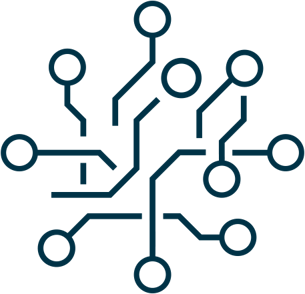As businesses continue to shift to the cloud, it is more crucial than ever to protect the infrastructure. According to a Gartner prediction, end-user expenditure on the public cloud will increase by 20.7% to reach nearly $600 billion in 2023 (Gartner, 2022)1. Identity and Access Management (IAM), which controls who has access to what resources in the cloud environment, is a crucial component of cloud security. The policies, procedures, and technologies that make up cloud IAM ensure that the appropriate individuals have the proper level of access to the appropriate resources at the appropriate time. This can guarantee identity security and safeguard sensitive data stored in the cloud. Cloud IAM is a critical component of cloud security, and organizations that implement effective cloud IAM solutions can reduce the risk of security breaches and ensure that their cloud infrastructure and data are protected.
In this article, we will discuss five best practices for cloud IAM that organizations should adopt to strengthen their cloud security posture.
1. Extend Principle of Least Privilege (PoLP) to Cloud
According to the Principle of Least Privilege (PoLP), a user or service should only have the minimal amount of access required to carry out their duties. Organizations can lessen the effects of any potential security breaches by adopting the least privilege principle in cloud IAM. For instance, the impact of a breach will be lessened if a hacker gains access to a low-level user's account because they will not have access to crucial data or applications. Hence, if a user's account is compromised, this makes sure that the attacker will only have access to a small number of resources rather than the whole system.
2. Use Multi-factor Authentication (MFA) for Cloud Applications
Users must provide more than one form of authentication as part of a security mechanism called multi-factor authentication (MFA) before being given access to a resource. MFA can consist of a factor the user knows, like a password; a factor they have, like a security token; or a factor they are, like a biometric factor like a fingerprint. MFA makes it more difficult for attackers to obtain unauthorized access to cloud services by demanding several kinds of authentication. Organizations can greatly lower the risk of unauthorized access to cloud resources by using MFA.
3. Employ Role-based Access Control (RBAC) in Cloud
Role-based access control (RBAC) is a technique for access control that provides people with access depending on their work responsibilities or roles within the company. This method makes IAM management easier and ensures that users have access to the resources they require to perform their duties. Organizations can lessen the possibility of malicious activity and data breaches through restricted access to their critical resources by implementing RBAC in cloud IAM.
4. Use Activity Logs and Monitoring in Cloud
Monitoring and activity logs are crucial elements of cloud IAM. They enable security teams to quickly respond to security incidents and identify suspicious activity by giving visibility into who is accessing what resources and when. Organizations can monitor activity logs to see possible security threats and take proactive steps to stop them from developing into large-scale breaches.
5. Regularly Review and Update Cloud IAM Policies
Cloud IAM policies need to be frequently evaluated and modified to make sure they still meet the organization's evolving security requirements. Organizations may detect and fix cloud IAM policy vulnerabilities with the help of regular policy reviews, which also make sure that access privileges are issued and removed properly. Ensuring that cloud IAM rules adhere to industry standards and regulations is also crucial.
Learn more: Strengthening IT Compliance: How Vulnerability Management Secures Your Business
Evidently, enterprises that wish to bolster the security of their cloud infrastructure and data must implement cloud IAM solutions that adapt best practices. On the market, there are a variety of cloud IAM services, each with special features and functionalities. Organizations should take several aspects into account when choosing a cloud IAM service, including the service's features and capabilities, usability, price, and compatibility with current cloud infrastructure. Also, it is crucial to confirm that the service abides by industry standards and laws, including the General Data Protection Regulation (GDPR) and the Payment Card Industry Data Security Standard (PCI DSS).
In conclusion, cloud IAM solutions are critical for organizations that want to ensure the security of their cloud infrastructure and data. Effective IAM cloud security practices, such as the principle of least privilege, multi-factor authentication, role-based access control, activity logs and monitoring, and regular policy reviews, can help organizations reduce the risk of security breaches and ensure that their cloud resources are secure. When selecting a cloud IAM service, organizations should consider a few factors and ensure that the service complies with industry regulations and best practices. With the right cloud IAM policies and solutions in place, organizations can enjoy the many benefits of cloud computing while ensuring the security of their data and resources. Adnovum helps businesses strengthen their cloud IAM security strategy. Speak with our specialists to discover ways to enhance your cloud IAM strategy today.
Reference:





